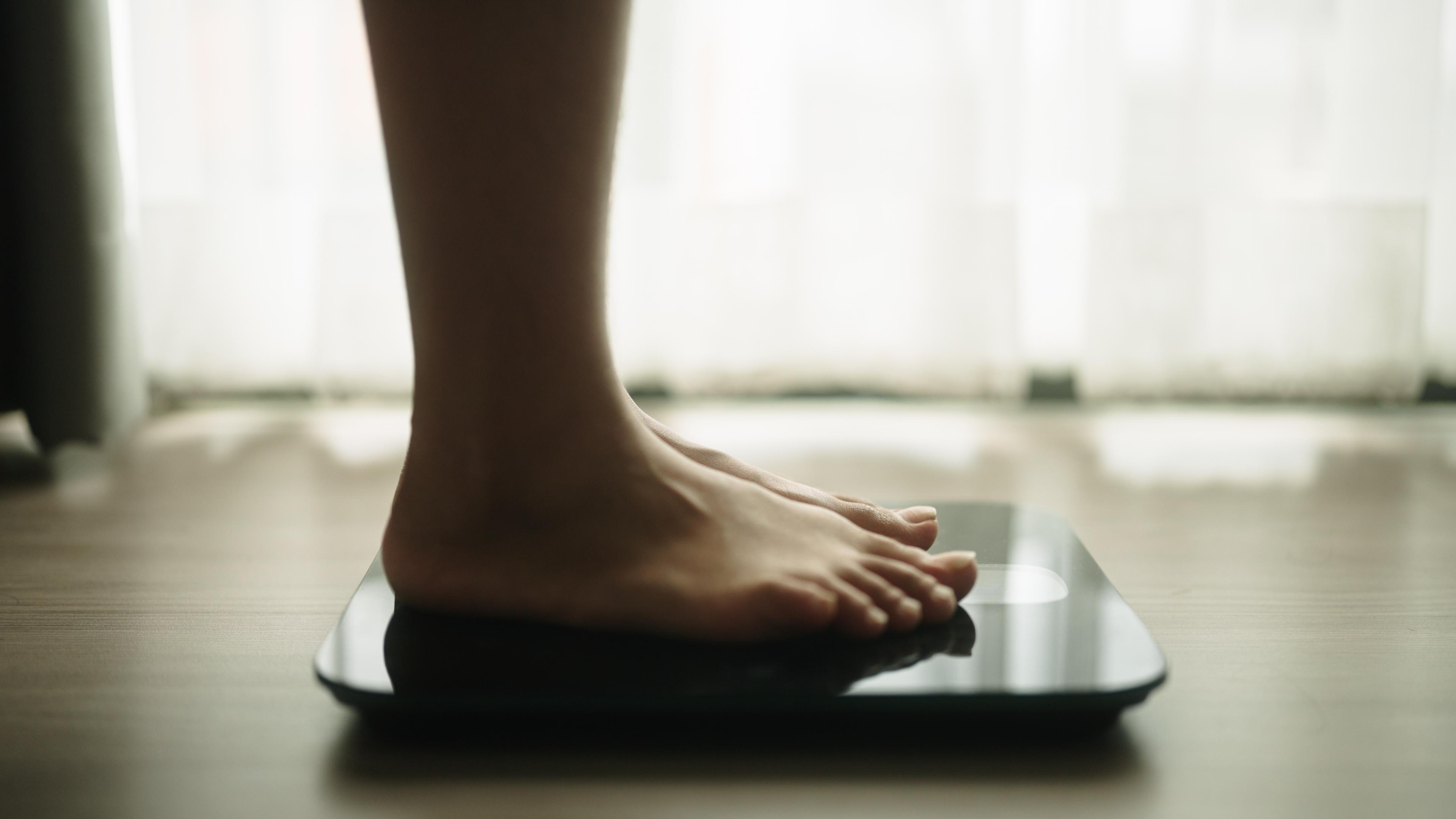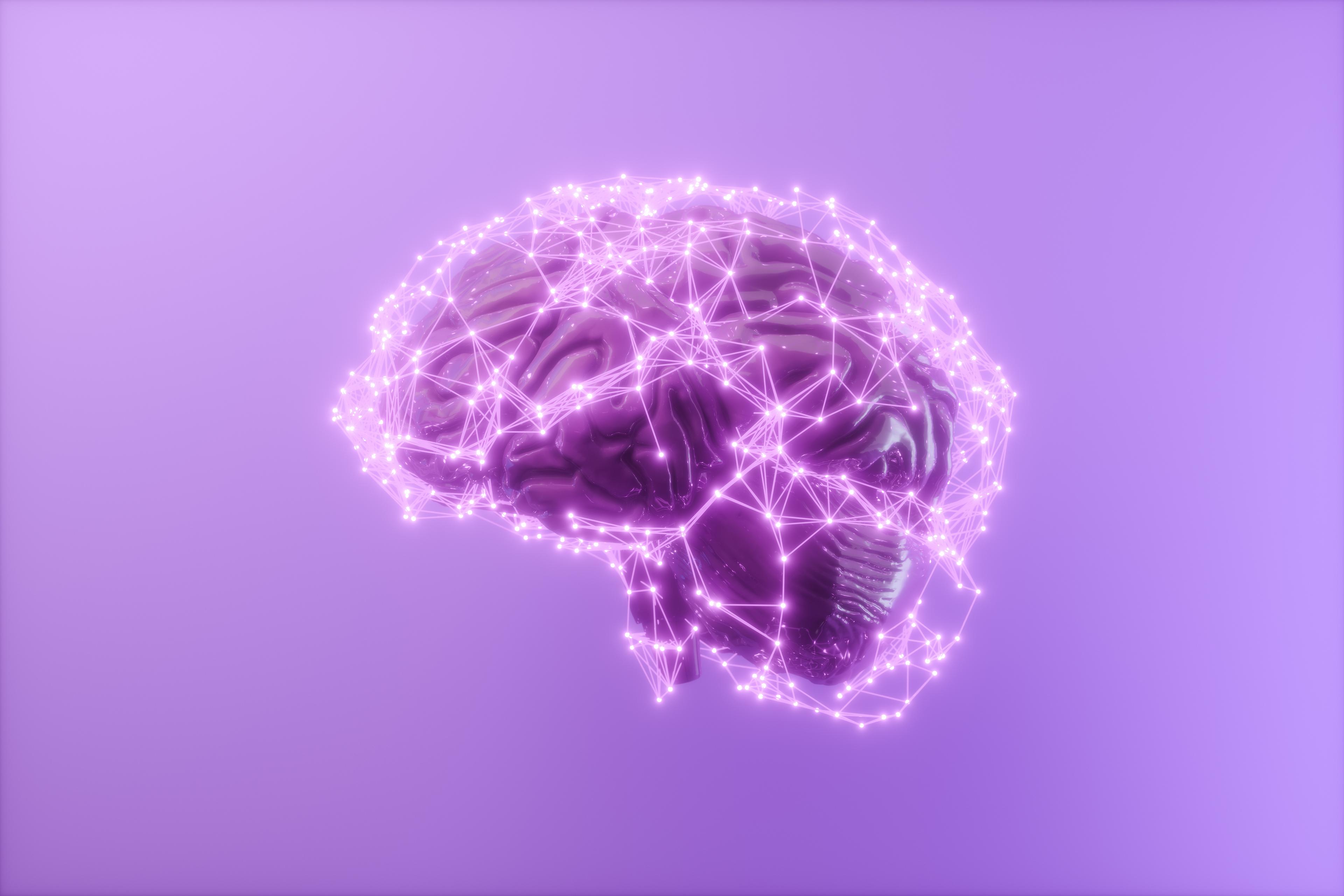
Binge eating disorder (BED) is the most commonly diagnosed eating disorder, affecting an estimated 2.8 million Americans at some point in their lives. Binge eating disorder is characterized by recurrent episodes of binge eating (where someone eats a large amount of food in a short period of time while feeling out of control), and it can do significant harm to a person’s mental and physical health, increasing the risk of diabetes, cardiovascular disease, nutritional deficiencies, and sleep disorders. BED is also linked with anxiety and depression.
To make matters worse, misconceptions about BED can lead to misguided—or even harmful—treatment approaches for those who seek help. “Much of my early binge eating disorder treatment was focused on being more controlled around food, which led to further confusion and tension around food,” says Stacy Jones, a peer mentor at Equip.
Luckily, effective binge eating disorder treatment options exist and are accessible. Read on to learn what treatment involves, the different options available, and how to treat binge eating disorder in a holistic way that leads to long-lasting recovery.
Recognizing the need for professional help
Many people still don’t recognize BED as a true mental illness. People struggling mistakenly believe it’s a matter of willpower, that they have an issue with “food addiction” or “overeating,” or that their behaviors are a personal failing rather than a serious mental health problem. All of this can prevent them from reaching out for help. But the reality is, binge eating disorder is just as serious as other eating disorders, and recovery requires professional support.
If you notice yourself or a loved one engaging in some or all of the following behaviors, it may mean it’s time to seek treatment:
- Regularly eating past the point of fullness
- Eating large amounts of food in short periods of time
- Hiding or stealing food
- Being highly critical of your weight or body shape
- Experiencing shame or guilt after eating
- Feeling fearful or uncomfortable eating in front of others
- Gastrointestinal issues
- Weight gain
What does binge eating disorder treatment involve?
Binge eating disorder treatment often involves a combination of therapy, nutritional counseling, and sometimes medication. This multidisciplinary approach treats the whole person rather than just symptoms, which leads to better outcomes and lasting recovery.
Perhaps contrary to many misconceptions about BED, experts say the treatment for binge eating should be rooted in addressing the urge to binge, not by suppressing or ignoring hunger. “A big component of treatment is identifying the binge triggers—besides restriction—such as specific places, situations, or people that may need to be put on hold until regular eating patterns are established,” Equip dietitian Gabriella Cohen says.
Therapy for BED
Binge eating disorder treatment employs many of the same therapeutic approaches as other eating disorders. This includes cognitive behavioral therapy for eating disorders (CBT-E), exposure and response prevention (ERP), dialectical behavior therapy (DBT), acceptance and commitment therapy (ACT), and family-based treatment (FBT).
- Cognitive behavioral therapy for BED works to identify and change the patient’s distorted thoughts about eating and their body and weight. Unlike regular CBT, CBT-E also provides education about BED so patients can better understand their eating disorder and the treatment process. Research shows that CBT-E helps reduce bingeing.
- Exposure and response prevention involves exposing the patient to thoughts, situations, and objects that cause them distress. At first the exposure is brief, and with time, the exposure becomes longer. During the exposure, the patient can’t engage in their coping behavior—in this case, binge eating—and must engage in other skills to cope. With repeated exposure, the patient no longer views the “threat” as a threat.
- Dialectical behavior therapy teaches coping skills, such as mindfulness practices, to help them accept and better manage difficult emotions. According to one study, DBT led to similar improvements as CBT did, though results were faster in the CBT group.
- Acceptance and commitment therapy is an action-oriented approach that focuses on accepting thoughts and feelings without judgment. This helps patients continue to pursue the life they desire, even though they still will face negative experiences.
- Family-based treatment is widely considered the gold standard of evidence-based treatment for children, adolescents, and young adults with binge eating disorder. “A support system can be essential in supporting the structure necessary to regulate eating patterns and reduce urges. FBT can also be important for accountability and emotional support,” Cohen says. Equip’s research has found that our FBT+ approach is effective for treating binge eating disorder in young people.
Whatever specific treatment modality is used, “targeting feelings of shame is often at the core of binge eating disorder treatment,” says Jenna Robinow, LMSW, a therapist at Equip. “Folks with BED, or those around them, may associate binging with stigmatizing and exaggerated themes like gluttony, laziness, or poor self-control. Those associations are harmful and unfounded, as BED is a serious mental illness and its symptoms should not be mistaken for the content of someone's character.”
Nutritional counseling for BED
A solid nutrition plan from a registered dietitian is one of the most important starting points for binge eating disorder treatment. An experienced dietitian for eating disorders can help patients challenge their beliefs about foods, binge less often, and teach them how to reduce their desire to control their eating (because, paradoxically, the desire to control eating often fuels future binges).
A dietitian can also create a personalized meal plan that helps the person struggling consume all of the nutrients they need, which can reduce the biological urge to binge. Often, the structure of a meal plan also helps reduce stress around eating.
Medication for BED
For some people with binge eating disorder, medication—often in combination with therapy—can help reduce binge episodes. Medications for binge eating disorder may include:
- Selective serotonin reuptake inhibitors (SSRIs): These antidepressants decrease binge frequency and depression scores.
- Lisdexamfetamine: The only medication FDA-approved to treat moderate to severe BED, this stimulant improves binge eating symptoms.
BED treatment options: choosing the right setting
Comprehensive binge eating disorder always involves a number of different specialists, as outlined above, but where and how you meet with them can vary. Today, help for binge eating disorder can be found in person or online, as well as in outpatient and inpatient settings.
In-person vs. virtual treatment
In-person treatment means the patient travels to an office or clinic to meet with their provider, who may be a physician, dietitian, therapist, or other specialist.
Virtual treatment for binge eating disorder involves seeing these same healthcare providers over a video or phone call on a personal computer, tablet, or phone.
Research shows that virtual eating disorder treatment is as effective as in-person treatment, but each person and their care team should thoughtfully decide what’s best for them personally. It can help to consider the pros and cons of each setting.
Benefits of in-person care
- The provider can do a physical exam
- No risk of technical difficulties
- Some people feel a stronger connection when seeing their provider face-to-face
Downsides of in-person care
- It can be more difficult to schedule, as you need to account for travel time
- You often wait for long periods of time in the waiting room, losing time that could be spent doing other things
- Many people don’t live near specialists
- It is often more expensive
Benefits of virtual care
- It’s convenient. You don’t have to take the time and gas money to travel and then sit in a waiting room.
- Being in the comfort of your home may help you open up more during sessions.
- The connections are secure and private, and nobody else needs to know you’re meeting with your provider.
- You may have better access to specialists who don’t offer in-person care in your area.
Downsides of virtual care
- Not all health insurance plans cover virtual eating disorder treatment.
- Internet connection issues could disrupt your session. If that happens, you may not get that time back.
- Some people may feel less connection with their provider when they meet virtually.
- Virtual providers may need to coordinate with in-person providers for any sort of physical monitoring, like checking weight or vitals.
Outpatient vs. inpatient care
Both outpatient and inpatient care can help with binge eating recovery. The main difference between these two is where the patient lives.
With outpatient care, the patient lives at home and meets with their providers, in-person or virtually, in individualized sessions. Outpatient care can include intensive outpatient (IOP) programs and partial hospitalization (PHP) programs, which take up more time than just seeing individual providers. However, outpatient care generally allows the patient to continue to live their lives while receiving the support they need.
Inpatient care includes both residential treatment and inpatient hospitalization. With inpatient care, patients live at the treatment facility where thye get 24-hour care, support, and medical monitoring.
Supporting recovery: Beyond clinical treatment
Care from medical doctors, dietitians, therapists, and other eating disorder specialists is crucial to treat BED. With this multidisciplinary clinical support, those struggling with BED can also begin to make lifestyle changes and build their support network in a way that supports long-lasting recovery.
Lifestyle modifications and self-help strategies
Before engaging in any of the below, it’s important to talk with your professional care team. They can help you decide what is best for you.
- Be active: Finding ways that you enjoy moving may help reduce binge eating symptoms. This isn’t about weight loss; it’s about appreciating what your body can do for you.
- Don’t skip meals: Not eating leads to more hunger, and can trigger the biological urge to binge. Eating regular meals and snacks is key to BED recovery.
- Practice meditating: Mindfulness meditation has been shown to decrease binge eating and emotional eating.
- Make a plan for triggers: It may be best to keep certain foods out of your house or to work with a therapist to create a plan for social situations where you may feel the urge to overeat.
Building a support system
Having friends and family who you can turn to can remind you that people love you and want what’s best for you. Eating disorders also thrive in secrecy, so surrounding yourself with loved ones can help prevent the social withdrawal that often allows for eating disorders to tighten their grip. Consider making regular dates to see loved ones and asking one or two people specifically if you can call or text them when you’re having a tough day. They can help you commit to your care plan.
As great as your friends and family are, they may not be able to fully understand what you’re going through. There are many binge eating support groups that meet in-person or virtually and can connect you with others who can relate to your situation and share their own experiences. You’ll feel less alone and may learn a few new coping strategies.
The Equip takeaway: Binge eating disorder recovery is possible
Despite common misconceptions, binge eating disorder isn’t a matter of willpower or food addiction. It’s a serious mental illness, and it requires professional treatment to recover. Usually BED treatment involves a multidisciplinary approach including therapy, nutritional counseling, medication, or some combination of these three components. Many of these BED treatment options can be done in person or virtually, giving patients flexibility in their care. Additionally, support from loved ones and care groups can make a big difference in reducing symptoms and getting back to a life worth living.
If you think you or a loved one has BED, reach out for help now. Eating disorders don’t go away on their own, and the sooner you start care, the better your chances of recovery. Talk with your doctor or a mental health professional, or schedule a call with an Equip team member.
FAQs
What are the most effective treatments for binge eating disorder?
The most effective treatments for binge eating disorder are cognitive behavioral therapy for eating disorders (CBT-E) or other types of therapy. Working with a dietitian who can create a personalized meal plan is also essential. In some cases, medications can help, such as selective serotonin reuptake inhibitors (SSRIs) and the stimulant lisdexamfetamine.
Can binge eating disorder be treated without medication?
Yes, binge eating disorder can be treated without medication. For many people, psychotherapy alone helps. The main types of therapy shown to reduce binge eating symptoms are cognitive behavioral therapy for eating disorders (CBT-E), interpersonal psychotherapy, and dialectical behavior therapy (DBT). Exposure and response prevention, acceptance and commitment therapy (ACT), and family-based treatment (FBT) may also help.
How do I find the right therapist or support group for BED?
To find the right therapist, seek out someone who received eating disorder education and has experience working with patients with binge eating disorder. Also check that they regularly work with other providers, such as medical providers and dietitians. Lastly, see how you feel when you talk with them; many providers offer a short, free intake call, which can give you a sense of what they’d be like to work with. You can schedule a free, no-obligation call with Equip to talk through your concerns and determine if Equip is a good fit for you.
To find the right support group for binge eating disorder, first ask your healthcare team if they know of any in-person or virtual groups. You can also search online. We recommend choosing a group with a trained moderator, a schedule that works for you, and that lets you participate as much or as little as you wish. As with therapists, it may take a few sessions to determine if the group aligns with your needs.
What role does diet play in the treatment of binge eating disorder?
The first step of binge eating disorder is to establish regular eating habits, which often means eating three meals and two snacks a day. In this way, diet is a core part of BED treatment. When seeking treatment for binge eating disorder, it’s important to work with an anti-diet, eating disorder-informed dietitian who can provide you with a personalized meal plan. Following a structured meal plan can reduce binge behaviors as well as stress around eating.
- Baker, Jessica H et al. “Enhanced Family-Based Treatment for an Adolescent With Binge-Eating Disorder: A Case Report.” Cognitive and Behavioral Practice. vol. 31, 2 (2023): 272-282. https://doi.org/10.1016/j.cbpra.2022.12.001
- De Jong, Martie et al. “Enhanced Cognitive Behavioural Therapy for Patients With Eating Disorders: A Systematic Review.” Curr Opin Psychiatry. vol. 31, 6 (2018): 436–444. doi:10.1097/YCO.0000000000000452
- Duan, Hanying et al. “Comparative Efficacy and Acceptability of Selective Serotonin Reuptake Inhibitor Antidepressants for Binge Eating Disorder: A Network Meta-Analysis.” Front Pharmacol. vol. 13 (2022). doi:10.3389/fphar.2022.949823
- Giel, Katrin E et al. “Binge Eating Disorder.” Nat Rev Dis Primers. vol. 8, 1 (2022): 16. doi:10.1038/s41572-022-00344-y
- Juarascio, Adrienne S et al. “A Pilot Study of an Acceptance-based Behavioral Treatment for Binge Eating Disorder.” Journal of Contextual Behavioral Science. vol. 6,1 (2017): 1-7. doi:10.1016/j.jcbs.2016.12.003
- Katterman, Shawn H et al. “Mindfulness Meditation as an Intervention for Binge Eating, Emotional Eating, and Weight Loss: A Systematic Review.” Eat Behav. vol. 15, 2 (2014): 197-204. doi:10.1016/j.eatbeh.2014.01.005
- Lammers, Mirjam W et al. “Dialectical Behavior Therapy Compared to Cognitive Behavior Therapy in Binge‐Eating Disorder: An Effectiveness Study With 6‐Month Follow‐Up.” Int J Eat Disord. vol. 55, 7 (2022): 902–913. doi:10.1002/eat.23750
- Mama, Scherezade K et al. “Effectiveness of Lifestyle Interventions to Reduce Binge Eating Symptoms in African American and Hispanic Women.” Appetite. vol. Dec 1, 95 (2015): 269–274. doi:10.1016/j.appet.2015.07.015
- Mars, Jonathan A et al. “Binge Eating Disorder.” [Updated 2024 Aug 11]. In: StatPearls [Internet]. Treasure Island (FL): StatPearls Publishing; 2024 Jan-. Available from: https://www.ncbi.nlm.nih.gov/books/NBK551700/
- Peat, Christine M et al. “Binge Eating Disorder: Evidence-Based Treatments.” Curr Psychiatr. vol. 11, 5 (2012): 32-29. Available from: https://www.ncbi.nlm.nih.gov/pmc/articles/PMC4768866/
- Richards, Jesse et al. “Successful Treatment of Binge Eating Disorder With the GLP-1 Agonist Semaglutide: A Retrospective Cohort Study.” Obes Pillars. vol. 7 (2023). doi:10.1016/j.obpill.2023.100080
- Schneider, Elizabeth et al. “Lisdexamfetamine and Binge-Eating Disorder: A Systematic Review and Meta-Analysis of the Preclinical and Clinical Data With a Focus on Mechanism of Drug Action in Treating the Disorder.” Eur Neuropsychopharmacol. vol. 53 (2021): 49-78. doi:10.1016/j.euroneuro.2021.08.001
- Traviss-Turner, GD et al. “Guided Self-Help to Manage Binge Eating in a Dietetic-Led Community Weight Management Service.” Clin Obes vol. 8, 4 (2018): 250-257. doi:10.1111/cob.12259
- Yang, Yive et al. “Beyond Refeeding: The Effect of Including a Dietitian in Eating Disorder Treatment. A Systematic Review.” Nutrients vol. 13, 12 (2021): 4490. doi:10.3390/nu13124490








